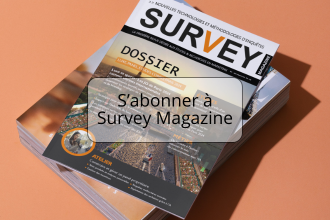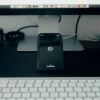Offers concerning data collections on the actual surveys market are various. Their use depends on the survey’s issue. Actually, according to the kinds of wished answers and the disposal means, the choice of the tool differs. Several collection techniques exist and are used according to the context and the constraints linked to the survey.
These constraints can be:
- Methodological: the target does not dispose of internet or the
questionnaire is long enough and detailed
- Budgetary: the sample is wide and too expensive to be contacted by
phone
- Time: the data collection must last during the day
- A specific format of the survey basis
- The quality of the information about the sample: what details do
we have?
- Quotas issue: how to establish dynamical controls?
- Administration and filling instructions: a researcher is needed to
explain or comment questions, to eventually show a sample or a visual.
The collection mode is not always an evident choice and it must be integrated to the methodological thinking of the survey at the beginning. The final chose solution often is the one that represents the best compromise between advantages and constraints. The final decision has to favor the reliability of the collected data. In the best case, we will try to combine several modes: a mail sending or an e-mail sending followed by a phone call, or conversely a phone call before sending a mail. Two different modes can be chosen according to the targets, by keeping the same questionnaire outline. The advantage of some software enabling to design the questionnaire only once, to deploy it with several collection modes and to take back a basis with the same format in order to have an immediate and multiple exploitation.
Survey on paper : The OMR technology
The survey on a paper is still today a currently used method, despite the huge coming of electronic technologies. It can be handed out on several ways of various qualities and more or less complexes. The paper way guarantees a freedom in action that can be used for face to face interviews or that can be auto-administrated. For big surveys not exigent (about time, quotas), this method is the most affordable. It also is a good mean to answer confidentiality needs or to address an important population of people who does not manage digital tools.
To automatize the long and fastidious process of data entering, it exists the OMR technology (Optical Mark Reading) that enables to design a questionnaire with answers to the closed questions that will be automatically read and with precision with the help of an optical reading or a scanner. The data control is made via computers and the answers to the questions in text can also be scanned to enable a digital entering. The technology of optical reading is really precise and has an impressive ability of reading: up to 7000 questionnaire A4 per hour. Because these devices are expensive they are reserved to the needs of recurrent surveys.
The phone survey: the CATI technology
People think that we just need a questionnaire on paper and fill the answer spaces for a survey by phone. But it exists a faster and more efficient way to lead a survey by phone: the CATI (Computer Assisted Telephone Interviews). It is made of several entering posts organized by one or several administrators posts and needs two elements: the digital questionnaire and the database of the sample to contact. This is an economical solution which enables to take short interviews (less than 15 minutes) or more long and interesting with an appointment with specific profile people or being interesting according to the subject of the survey.
The advantages of a survey by phone with CATI are:
- Computing reentering step of the cancelled answers
- Automatic assignment of the calls
- Automatic control of coherence
- Automatic recalls with appointment
- Setup of filters and links between questions
- Dynamic control of quotas
- Following of the researchers activity
The association of a CATI solution with a survey software enables to observe the development of the results in live. We can couple the solution with a reporting function in order to follow and intervene in real time.
The computerize face to face survey: the CAPI technology
The CAPI (Computer Assisted Personal Interviews) is a face to face survey method that uses digital devices. First substitutes to questionnaires on paper for the face-to-face surveys, the PDA and Pocket PC offer to the researcher an ergonomic interface and a flexible use. Researchers also can interact with respondent people and easily collect answers in the store, in the transports… It guarantees an automatic transfer of the collected data to an analysis module, the salvage of answers on a computing post is made via a cable or via Bluetooth.
The offer of mobile devices incredibly increased on these last few years, and phones and digital tablets went over the CAPI tools in each technical and ergonomic sector. These defaults and the popularity of these new digital devices lead to a disappearance of the CAPI and the appearance of the CAMI, the mobile survey technology that we are going to detail in the next slide.
The mobile survey on smartphones and digital tablets: The CAMI technology
The CAMI (Computer Assisted Mobile Interviews) is the last survey technology. The method uses digital tablets and smartphones, objects that are more and more popular and powerful to lead mobile surveys. These tools enable to design complex questionnaires with ergonomic interfaces and ability of display quite impressive. Thanks to the internet connectivity, you can administer your questionnaire to a researchers’ network and develop original functionalities for a mobile use:
- Reduced transport time (researchers and questionnaires)
- Increased productivity
- Strong reactivity (questionnaire adaptability in real time)
- More ecological method compared to questionnaires on paper
- Design of more complex questionnaires and more ergonomic
questionnaires
- Display and taken of pictures and videos
The availability of the questionnaire as an application on the mobile enable to manage the survey as well on connected mode as on disconnected mode. This quasi-constant connection to internet by wifi or 3G (soon 4G) offers the ability to ask anybody having a mobile device (tablet or smartphone) wherever and whenever. To discover all the functions and opportunities of mobile surveys on digital tablets and smartphones you can give a look to our article about the revolution of CAMI method.
The survey by an interactive meeting: the CAGI technology
The CAGI (Computer Assisted Group Interviews) is collecting mode really special because (conversely to the other methods), it enables to collect answers in an individuals group. Its use is spread in marketing and commercial services, general assembly or in training to test knowledge of people and to know their thought.
The survey by an interactive meeting made by a researcher in charge of the answers collect in real time. Each of the individuals is given a vote device equipped with a numbered keyboard and a LCD screen in order to see their answer. The animator of the meeting has a computer equipped of the management survey software on which are linked a video projector and a receptor. This receptor box of radio waves (frequency HF 433 Mhz) enables the instantaneous transmission of responses and the display of the result in real time on the screen in the room.
The software of CAGI surveys design enable to create a questionnaire scenario with multimedia content and open and closed questions. Some of them such as InterAct give the opportunity to directly display data on board or graphics.
CAGI is the best solution to quickly collect quality information by keeping the anonymity of interviewed people.
The web survey: the CAWI technology
The display of questionnaires on Internet is today the most worldwide used data collect method. CAWI (Computer Assisted Web Interviews) enables to pass the barriers and to dive the respondent person into a simple, funny and playful universe and to quickly give to researchers the precise data collected. It is 5 times faster and costs about 15% less than an offline survey. Internal or external use of the web survey easily adapts in the marketing sector but also in other sectors such as human resources, quality or training.
CAWI technology gives you access to many functionalities to make a personalized and unique document of your questionnaire:
- Conditional display of questions and pages
- Automatic management of quotas
- Display of the multimedia content
- Integration of questionnaires on a website
- Automatic translations
- Tag cloud
- Dynamic graphics
- Scores applications
- ...
The ability to design databases enable to better target respondent people and the free access to the questionnaire gives an original filling comfort.














